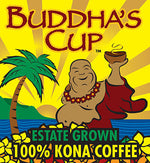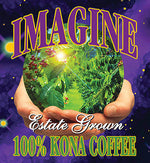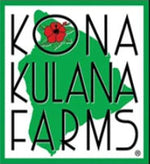Tea was first created in China, but the first tea party originated in England. It was held in the 1600s by King Charles Ⅱ and his wife, Catherine de Braganza.
By the 19th century, tea parties had risen in popularity, but it wasn’t until 1840 that afternoon tea became a sacred practice. The seventh Duchess of Bedford, Anna Maria Russel requested tea, bread, and cake around 5 pm due to an industrialization-caused late dinner. This tradition spread across England.

In wealthy English society, afternoon tea was thought of as an extremely refined event, and the proper porcelain teacups, bowls, decorative teapots, exquisite table linens, and personalized blends of tea were required.
Throughout the Victorian Era (1820-1914), tea parties expanded. Soon there was ‘at-home tea’, ‘simiple tea’, ‘family tea’, and ‘high tea.’ These tea parties were more casual and stripped back; some were even standing-only events. Due to their relaxed nature, these tea parties were catered more to the working class.
While tea parties were transforming in England, they were also occurring in Japan and China via traditional tea parties. The parties also rose to popularity in Russia after the Russian Civil War. And, in the United States, tea parties were hosted everywhere, including by the First Ladies to welcome international guests or the incoming first lady.
Tea parties played a significant role in fostering social connections and creating a leisurely culinary experience. In England, tea parties were seen as a radical feminist act because they allowed women social freedom and even changed the traditional dress codes, lessing the corsets. Tea parties continue to be a traditional event, evoking ritual and performance, and, as always, allowing for a bit of gossip.
Sources: British Museum, Hackberry Tea
Setting the Stage for a Memorable Afternoon Tea
At Buddha’s Cup, we believe the best kind of party is a tea party, so we put together important planning considerations, including:
- Choosing the right theme for the occasion.
- Curating the tastiest teas and treats.
- Creating an inviting ambiance by using the right decorations and tableware.
Planning Your Tea Party Theme
Choosing the perfect theme for your tea party carries a lot of weight, we recommend selecting one that reflects your personality or celebrates a special occasion.
The decoration, table settings, and dress code should complement the theme, which may be a traditional Victorian tea party or a modern gathering.
Classic Elegance
Classic tea parties were primarily for the wealthy, so your decor and table settings should evoke the elegance of these events. Lace tablecloths and fine porcelain teacups should adorn your table. Use a decorative or silver tea cup.
Set up classic floral arrangements, using lots of pastel pink and yellow flowers.
Encourage your guests to pull out puff sleeve dresses and corsets for reminiscent, sophisticated attire.
Garden Tea Gathering
Embrace the natural elements of tea, and transform your tea party into a blooming garden oasis with fresh flowers and greenery. You can do this by hosting your party outdoors, with wicker patio furniture. Or bring the outdoors inside with plenty of plants and flowers.
Choose tableware that evokes a garden feel, and serve refreshing teas that embody the light, springy ambiance.
Your guests can dress in flowery, botanical prints.
Modern Chic
Or, completely switch up your tea party and choose more contemporary design elements such as sleek tableware and minimalist decor.
A more modern twist allows you to experiment for bolder color palettes, or even take a dip into a monochromatic world.
Once you choose your colors, select complimenting teaware and encourage your guests to dress accordingly.
As for the tea, offer trendy and new tea blends and choose treats that appeal to the modern palate.
Selecting Your Tea and Accompaniments

If you are planning on a lot of guests, it’s best to have a variety of offerings suited to different tastes. This includes multiple different high-quality teas, including such as black, green, herbal, and floral varieties.
You should also provide your guests with a variety of sweet and savory snacks, including sandwiches, scones, cakes, and cookies.
While inviting guests, be sure to take note of any dietary preferences or restrictions, offering vegan, gluten-free, and dairy-free options when needed.
Choose the perfect teas for Buddha’s Cup.
Setting the Table and Creating an Inviting Atmosphere

Choose table-setting elements that fit your theme. Perhaps your garden afternoon tea involves a simple wicker table, or maybe your elegant affair requires lace table linens and fine china.
If you're throwing the party on a budget, browse local thrift stores for cheap, but still beautiful, decor.
Fresh flowers and candles create an inviting ambiance reminiscent of traditional afternoon tea.
And don’t be afraid to arrange the seating before guests arrive, placing strangers together to encourage conversation and break social norms, as they did in the 1800s.
Preparing Delicious Tea Sandwiches and Savories

Having an assortment of sweet treats is vital, but so is having a collection of savory bites.
These should range in flavor and presentation to keep your guests excited throughout the tea. Also, be sure to keep everything bite-sized for the easiest eating experience.
Here are some savory recommendations:
- Cucumber sandwiches
- Smoked salmon sandwiches
- Savory tarts
- Mini quiche
Indulging in Sweet Treats with Scones, Cakes, and Pastries
The first-afternoon tea was served with a slice of cake, so be sure to incorporate sweetness into your menu.
These desserts can range from scones to cakes, and it never hurts to have a few different options.
Create a sophisticated dessert spread that captures the seasonal flavors
Scone Selection
Serve warm, freshly baked scones to your guests alongside clotted cream, lemon curd, jams, and butter to create a delicious and decadent experience.
Don’t just stick to plain, include blueberry, lemon poppyseed, raspberry, and savory scones on your menu.
Cake Delights
Everyone loves a miniature sandwich, and a miniature cake is even better.
Just like the scones, offer your guests a variety of cakes from traditional Victoria sponge to experiment flavors, like infused rum cakes. And don’t skip out on intrinsic frosting decorations or edible flowers to create the perfect aesthetic.
Ask ahead of time what guests need gluten-free or vegan options and accommodate your menu for them.
Pastry Pleasures
Éclairs, tarts, and profiteroles, oh my!
Providing an assortment of pastries that are filled with seasonal fruits and flavors ensures your guests won’t leave hungry.
By including a variety of pasties, you cater to your guests' different palates and textural preferences, which is a true sign of a great host.
Brewing the Perfect Pot of Tea

Now onto the most important part of a tea party: the tea!
Let’s dive into some things to consider.
Choosing the Right Tea and Water

Choose tea from highly reputable sellers that prioritize premium tea, whether it's loose-leaf or bagged. This will ensure the best-tasting tea.
Use spring or filtered water instead of tap water to brew your tea because the water quality will significantly affect the taste.
When heating your water, match it with the types of tea you are serving. Green tea requires a much cooler water temperature, whereas black tea needs hotter water to bring out the complexity of taste.
Preparing the Teapot and Infuser
Preheat the teapot by adding hot water before adding the leaves so your tea is consistently brewed at the optimal temperature.
Use a tea infusor or strainer when brewing loose-leaf tea. You can find cute infusors that fit your tea party theme online or at kitchen stores.
Lastly, be sure your teapots, cups, and infusor are completely clean to ensure a pure taste.
Brewing Process and Timing
When your guests arrive and the time to brew the tea comes, follow the recommended guidelines that should come with your tea. These guidelines will instruct you on the appropriate amount of tea and the steeping duration.
Following these guidelines is essential to prevent a bitter taste or weak brew.
The steeping process can be an individualized event, giving your guests their hot water and tea and allowing them to create a tea that fits their tastes.
Engaging Activities and Entertainment
If sitting around and gossiping isn’t enough for you and your guests, incorporate different events or entertainment into the party.
These activities can include:
- Tea tastings
- Trivia
- Hat contests or fashion shows
- Live musicians or karaoke
- Photobooths
Perfect Tea Parties At Home
As your guests leave, thank them for coming and give them a party favor to show your gratitude. This gift could be as simple as leftover snacks or bags of the tea you all enjoyed.
The last step of any tea party is reflecting on the timeless ritual you hosted and considering what you can do better next time.
At Buddha’s Cup, we offer a variety of tea you can shop from for all your tea party needs.
Frequently Asked Questions
What are the origins of tea parties?
Tea parties originated in the 1600s in England and gained popularity in the 19th century. At the time afternoon tea was primarily for the wealthy and required fine dishware and exquisite decor. Since then, tea parties have devolved into a sacred tradition celebrated around the world by every class.
What should my tea party theme be?
The theme depends on your personal preferences. Your party could celebrate a special event or you could embody the traditional roots of a tea party by choosing a Victorian Era theme.
What should I serve at my tea party?
Tea, obviously. (And make sure it’s high-quality.) But your menu should also include a range of savory and sweet treats that fit your audiences’ dietary preferences.
How do I brew tea for a tea party?
Follow the instructions on the tea you got and allow your guests to choose the steeping time based on their tastes.













